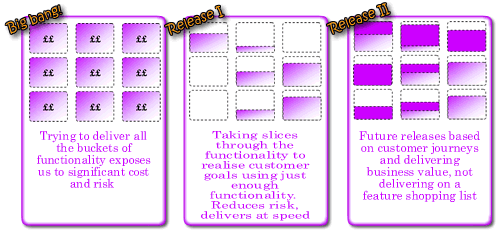It’s not good enough to blame the computer. Blame the lack of tests
It’s education lottery time. Parents are receiving letters bearing good or bad news from schools telling them if their little lovelies have got places in their chosen schools or not. Choice being the big thing – although there isn’t really such a thing as choice, it’s more a preference. Parents have have three choices, ranked one two or three. Good schools have strict admission criteria, and will usually only accept “first choice” children. Don’t get your child into your first choice school and you are at the mercy of the local education authority – no good school will accept parents who rate their schools as second or third choices. It’s not an ideal system, but at least all the letters go out on the same day so you get to know where your child has been allocated a place.
Sadly we fall into the unfortunate category of parents whose first choice has not been honoured. Our first choice school has rejected us on the grounds of distance from the school. Their classroom quota has been reached and we didn’t fill it. That is not good for us! So will we be exceptionally lucky and our daughter get a place in our second or even third preferred schools? We don’t know. And Surrey Country Council can’t tell us.
We’ve got a week of anxious waiting before they send their letters out. They’ve got a problem with their “systems.” Well that is the message I get told when I rang them up. “We can’t tell you anything more because we don’t even know” I was told.
Frankly it is not good enough to blame the computer. If something so critical happens in the private sector, SLAs dictate a course of action; this is a severity one problem that will be fixed within hours. Not weeks. But this is good enough in the public sector where faceless bureaucrats can hide behind the computer, cosy outsourcing deals with little accountability mean that no-one really needs to take responsibility. Take responsibility for the pain and distress this is causing me and my family!
So I got their press office number from the website and rang the Head of Communications. She knew nothing of any problems with letters going out, but promised to have someone call me back to let me know what the problem was.
A little while later I got a call back and was told that there was indeed a problem with the computer, specifically in resolving offers, and in particular resolving offers where children have other siblings already in the school. I was also told that they’d earlier had problems in importing data into their systems.
Now the deadline for getting completed applications in is the end of October. That was four months ago. Four months to scan several thousand forms and process the data, and get it right. That is not such a hard task is it? OK, so the process changed for this round of admissions so changes would have been required to the systems, but even more reason to make sure you get it right. It begs the question, was there a test strategy in place? Did anybody do any testing? I believe that the system has been outsourced to Capita. Has anybody at Capita heard of test driven development? It strikes me that this sort of project is ripe for an agile approach to delivery; a business critical system that cannot fail, simple business rules… I wonder if my MP is going to listen to this story…



